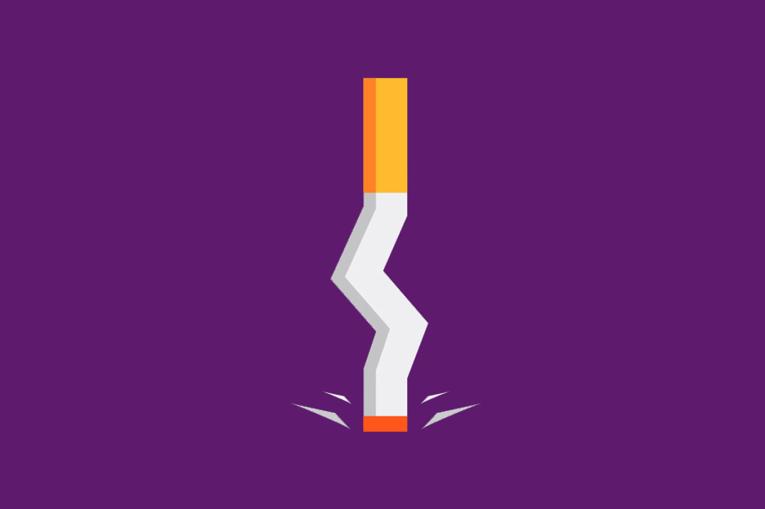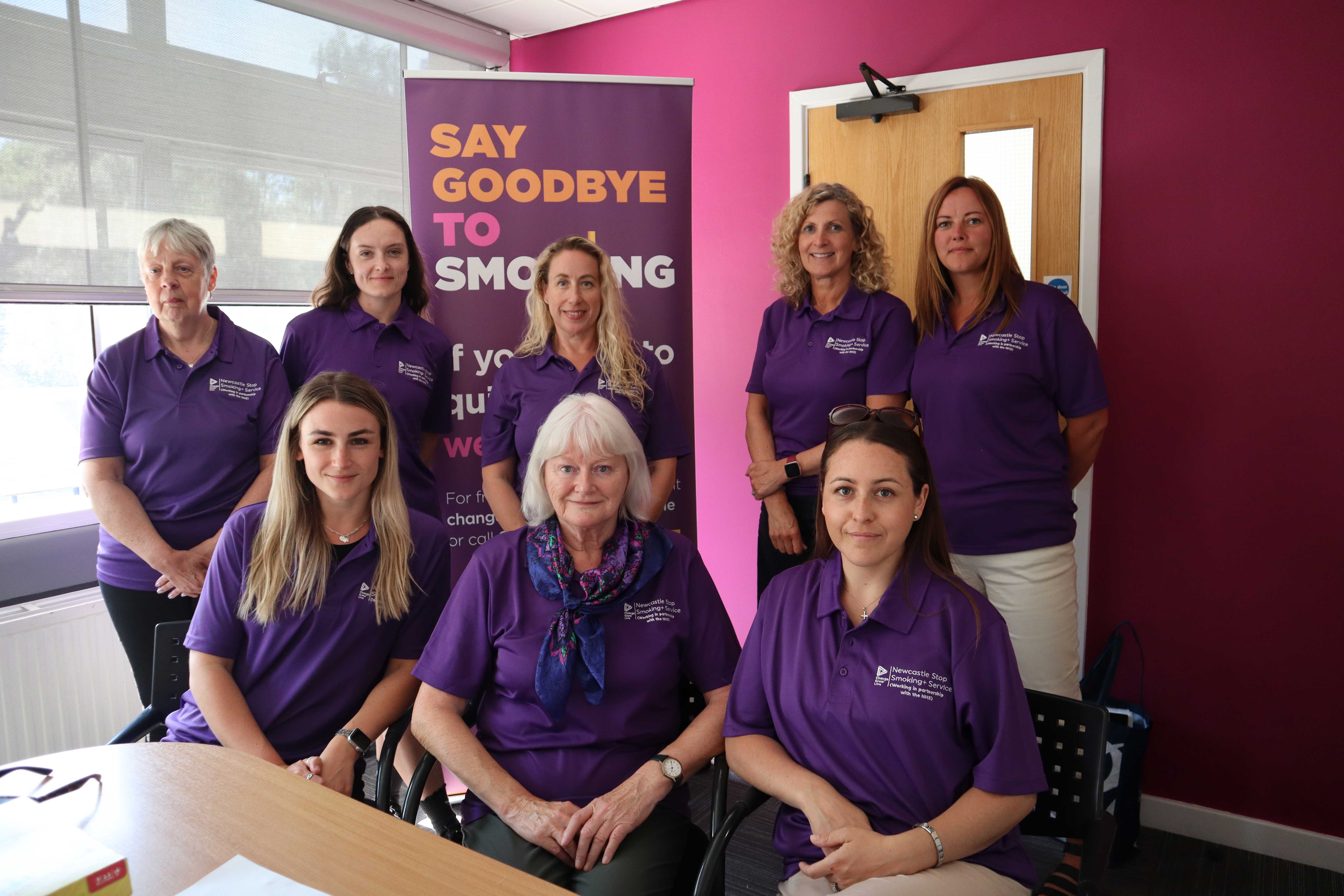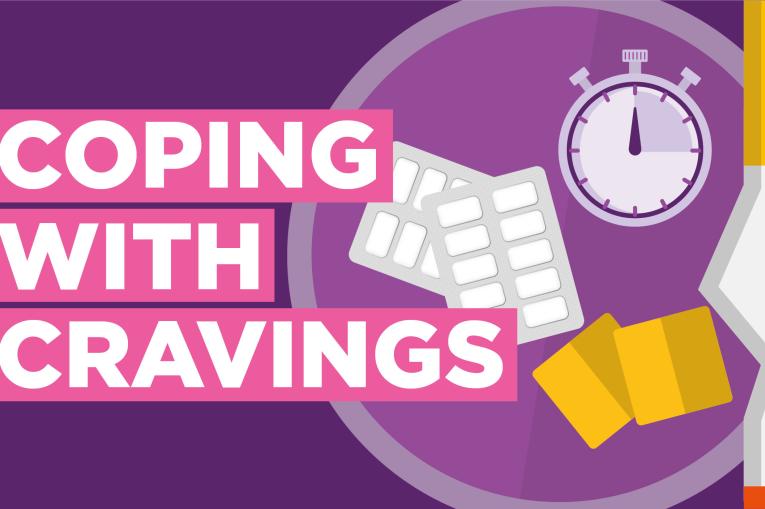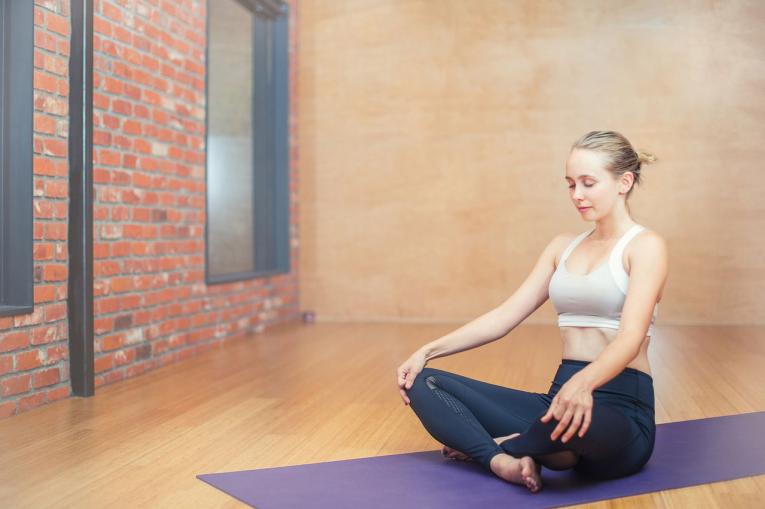
Welcome
Welcome to our December 2023 Newcastle Stop Smoking+ Service Newsletter, packed with information and activities to help you through the winter period, including a success story, a recipe and a service update from our team.
Service update
Service Manager Rachel
 As 2023 draws to a close we look back at our achievements during the past 12 months. We continue to provide remote support and e-vouchers to our clients, which provides flexibility and ease for those wishing to quit smoking. We've seen a whopping 40% increase in referrals from 2022 to 2023, which is fantastic.
As 2023 draws to a close we look back at our achievements during the past 12 months. We continue to provide remote support and e-vouchers to our clients, which provides flexibility and ease for those wishing to quit smoking. We've seen a whopping 40% increase in referrals from 2022 to 2023, which is fantastic.
Unfortunately, Champix has not been available throughout 2023, but we have been able to provide free vapes as an alternative aid to quitting smoking as part of several pilot schemes we've undertaken this year. Vapes have proved to be quite popular with a 60% quit rate for those using a vape alongside another Nicotine Replacement patch. We would like to acknowledge and thank Vape Dinner Lady for providing the vapes and e-liquids for our clients.
We would also like to extend a huge thank you to our colleagues in Newcastle hospitals as well. The introduction of the NHS long term plan has helped strengthen existing partnerships and embed referral pathways.
We're excited to be moving into 2024, building on the successes of 2023 and looking at reintroducing our face-to-face sessions throughout the city.
Tony's success story
 I actually don’t know how I started smoking, I was later than some people, I was 25, I think. I would go out with my friends, and they all smoked, so I was a social smoker initially when I went out drinking. At the beginning, I would smoke 10 cigs a day, then this progressed onto 20, and then 40 a day.
I actually don’t know how I started smoking, I was later than some people, I was 25, I think. I would go out with my friends, and they all smoked, so I was a social smoker initially when I went out drinking. At the beginning, I would smoke 10 cigs a day, then this progressed onto 20, and then 40 a day.
I’m 62 years old now, and I started to notice that I wasn’t feeling well, I wasn’t being able to do things with my grandchildren as much as I’d like. I would struggle taking them swimming, as I wasn’t getting enough oxygen, which was upsetting. I have three grandchildren, 10, five and four years old, and I wanted to spend more time with them, so I decided to try and quit again.
I have tried to quit before, eight years ago, and I was the only one smoking in the house at the time. My wife was always complaining that our house smelled of smoke. They didn’t have vapes and other products back then, so I used the patches initially, but they burnt my skin, so I then went on to Champix. I stopped for over a year using Champix, but I then went to a wedding and had a cig, and that was it, I was hooked again – it was the worst thing I have ever done!
I went to the doctors, and they asked about my smoking status and if I would like to stop, so they referred me to the Newcastle Stop Smoking+ Service. The team explained the different products available, and I decided to use a vape instead. I started on a 20mg vape, but then I went down to 10mg with their support, and I’ll eventually get down to 0% nicotine.
The hardest part for me was when I would have a coffee, I used to always smoke with it in the morning. But now I don’t even touch my vape with a coffee, I put the TV on instead to distract myself. Even when I’m out, I don’t drink anymore, so there’s no temptation there to smoke either.
My sense of smell is all new since I’ve stopped smoking. I didn’t have a sense of smell or taste for five years before Covid, and now I’m getting it all back, which is fantastic. I’m enjoying my food again!
I’m so much better off financially, too, I would spend £70 a week on cigarettes, but now I spend this on my family and food instead. I have money in my bank for a rainy day, as a safety net too.
Some days I feel like I might like a cigarette, but I have the willpower now to resist. My wife unfortunately died in the pandemic, and this is a trigger for me sometimes, but if I ever feel like I’ll slip, I use my vape instead.
The support and supplies from the service were really useful. My Stop Smoking Advisor Rachel was a huge help. It was nice to talk to someone, the interaction with Rachel was great, and she gave me more confidence in myself to keep going. There was plenty of encouragement on the phone, and to know that someone was listening and willing to help made all the difference. The service was spot on!
Rachel made sure I had all my e-liquids and vape starter pack too. It was really easy to get, and all my e-liquids were delivered to my door, so it was an easy transaction. She explained why I needed to get rid of all of my smoking paraphernalia too, so I gave all my lighters away, which helped not having them in the house.
I always recommend the service to family and friends, to encourage them to quit as well. You shouldn’t be embarrassed to reach out for help, as the service is really friendly, and you don’t feel like you’re being judged either. It’s the best thing that I ever did!
You have to want to quit, or it won’t work. You have to say ‘I will stop’. Stopping smoking is hard, but you have to fight the little pangs of cravings and never give up!
Recipe
Having a drink over the festive period doesn’t always mean you have to have alcohol. There’s plenty of nice refreshing options to share with family and friends that are alcohol-free.
Stop Smoking Advisor Emma shares her take on the classic White Russian cocktail, but with a mocktail twist to indulge your sweet tooth! And it only takes five minutes to make!
With strong coffee, cream and a drizzle of sweet, salted caramel sauce, this is the ultimate grown-up mocktail to try this Christmas.
Ingredients
- 4 tsp instant coffee
- ½ tsp vanilla extract
- 2 tsp sugar
- 4 tbsp salted caramel sauce
- 100ml single cream
- 4 rosemary sprigs, to serve
Method
- Dissolve the coffee in 400ml boiling water. Stir in the vanilla extract and sugar until dissolved, then set aside to cool.
- When ready to serve, drizzle the salted caramel sauce down the sides of 4 glasses.
- Add a couple of ice cubes to each glass and carefully pour in the coffee.
- Divide the cream between the glasses (1-2 tbsp per glass) and lightly swirl together. Garnish with a rosemary sprig.

Tips for quits
Stop Smoking Advisor Rachel gives her tips on using a vape as a stop smoking treatment, and how to stay smokefree this winter.
- Use the vape as much as needed to combat cravings and urges to smoke.
- Make sure it's charged and full of e-liquid when going out socially.
- Keep it to hand, so that it can be used whenever you experience an urge to smoke.
- Don't feel rushed to come off the vape. We have 12 weeks to reduce the nicotine and wean you off slowly and safely.
- Tell family and friends that you’re trying to quit, so they don't offer you any cigarettes, and ask them to try not to smoke around you.
- Use the nicotine replacement products as advised by your stop smoking advisor to help combat cravings and urges to smoke.
- Treat yourself with the money you've saved from quitting smoking.
- Drinking too much alcohol can increase triggers to smoke, so limit your alcohol intake.
- Be realistic about what you take on over the festive period, try not to cram too much in your diary which can make you feel overwhelmed.
Senior Administrator Kay’s cravings log
Identifying your triggers and cravings gives you the awareness and power to understand and deal with them. Awareness and understanding of your triggers and cravings is crucial to overcoming any addiction, including smoking.
One way to start identifying your triggers and cravings is to record them in a cravings log. This is a table in which you can record specific information about your triggers and cravings when they happen, such as what the trigger was, the strength of the resulting craving, how you coped (i.e. smoked a cigarette) and your thoughts and feelings surrounding that, and then a space to write down some alternative ways you could have coped better, so that you can attempt to do this next time.
After a few entries, you may notice patterns and similarities which will help you to start anticipating situations and emotions that trigger cravings; you can use this information to learn new, healthier ways of coping when these situations or emotions occur.
You don't need much to get you started. Grab a pen and a piece of paper and draw out a table with the following headings across the top:
- Date
- Time
- Strength of Craving (1 - 10)
- What triggered my craving?
- How I coped and how do I feel about it
- Alternative coping techniques
Give yourself plenty of space to write underneath each heading whenever you experience a trigger and feel a craving to smoke. Think about other ways you could cope with this trigger: perhaps you could try distracting yourself with a hobby, do some exercise or talk to a trusted friend/relative or write in a journal if something has been emotionally upsetting.
Keep your cravings log close by, so that you can refer to it next time you experience this trigger and try your alternative coping strategy before you pick up a cigarette.
You may be surprised to notice that your craving has dissipated once you have finished your activity! The more you use this tool and reflect upon your findings, the more you will begin to build healthy coping techniques and reaching for a cigarette will no longer be your first move.

Mindfulness
Stop Smoking Advisor Celeste is also a qualified yoga and mindfulness instructor, and she shares some exercises to try and help with stress and cravings.
When you are struggling with cravings, Mindfulness can help you take notice of the present moment, so you can reconnect to your body and notice how you feel, what thoughts are around, what you can smell, taste, see and hear. Mindfulness is simple yet profound and it can be done anywhere, anytime. By learning to be more mindful you can see the present moment more clearly, make better decisions and see yourself more positively.
Mindfulness is being present in this current moment and becoming more effective at self-regulation. Your ability to self-regulate can become impaired when you smoke, when you are stressed, worried or angry.
Your brain and body can self-regulate naturally… most of the time. But this can be suppressed when you smoke, as your brain begins to feel that instant rush of chemicals, which appears at first to be a quicker way to avoid those unpleasant thoughts and feelings you were consumed with five minutes ago. This is not a healthy nor helpful way to self-regulate, no matter how many times you try this method to find an escape, an answer, a distraction you always end up right back where you started.
Instead, you can train your brain and your nervous system to self-regulate more easily. This means finding something that helps you return to that calm, natural state of being, even in times of chaos.
Self-regulation can look like taking some deeper breaths, it can look like shaking and dancing to release stress and physical tension (even if this feels awkward and cringey at first, do it when you’re at home and you can learn to laugh at and with yourself). Letting out a big scream feels like a good release or hugging someone you care about, taking a walk for fresh air (yes even in the rain), eating your favourite food, cold water exposure or slowing down to enjoy a nice warm drink and be still for a few moments.
When we rely on ourselves to self-regulate, we build more self-trust and self-belief, meaning we begin to feel more positive, and it becomes easier to notice when stress or anything uncomfortable is arising.
Mindfulness can help you pause before you go on autopilot, before the craving jumps into the driver seat, pushes you aside and then suddenly, you are right back at ‘regret street’ after lighting up. So instead, when the craving tries to hijack you, you will be able to recognise it, you will notice it, just like noticing your next breath, and then decide instead to do something else, anything that gets you back in your body, back in the present moment, back in control of those cravings.
So, what can I do, you ask? Below is a list of different mindful techniques that can help:
- Breathing: You do it constantly without even thinking about it. So how about noticing it for a while. You could try noticing the pace of your breath, is it quick, slow, can you lengthen every inhale and exhale. Where do you feel your breath? In your nostrils, your chest, your belly? Just take a few moments here to slow down and notice. You can do this for one breath or for as long as you want, anytime, anyplace.
- Full body scan: This is a mindful meditation technique. You can be anywhere when you do this, but can be helpful to sit down or lay down somewhere you won’t be disturbed. You can close your eyes if you feel comfortable to do so. Begin by sending your awareness to the top of your head, and slowly begin scanning down through your full body, noticing any sensations that may appear. You can do this once or repeat up and down as often as needed.
- Journalling: You can journal at any time during the day, as often or as little as you like, it can be simple words, feelings that are around, thoughts, you could write paragraphs, this is all depending on how you feel but being able to write things down helps you notice what is going on inside, it can help you offload any emotions. No one needs to read your journal, it is yours, therefore you to express anything and everything whenever you need it and helping you become more aware.
- Mindful walking: Getting out for fresh air is helpful to us all. The next time you are out on a walk, keep your head up, try to look around and see what you notice, the colour of the trees, the dogs running after their ball, the people wrapped up in scarfs and gloves, you might notice what you can hear, the birds chirping, the cars, the wind, you might notice each step, one after the other.
- Mindful eating: Slow down when you eat, really smell the food, taste each mouthful, notice the textures, the temperature, the taste, this can help you become present and notice when you are full and appreciate each meal a little more.
- Exercise: When we move our bodies our mood improves, positive endorphins are released, we are getting healthier, stronger, and overall, we feel more energised. Any type of exercise can help you reconnect with your body more, find exercise that you enjoy, whether that’s hitting the gym, going for a walk or a run, going to Yoga, a dance class or playing football. When we exercise, we are focused, we are present.
The above practices are available for you to do anywhere, anytime, as often or as little as needed. It will get easier, and remember you are doing this for you.
Useful links
We understand the festive period can be hard for some people. For information, wellbeing advice and support, see the following links.

Get in touch
We’d love to hear from you!
The service is continuously adapting and developing, to make sure we’re providing the best service possible.
Your opinion matters to us, so please complete the survey to let us know how we’re doing.
Pulse survey